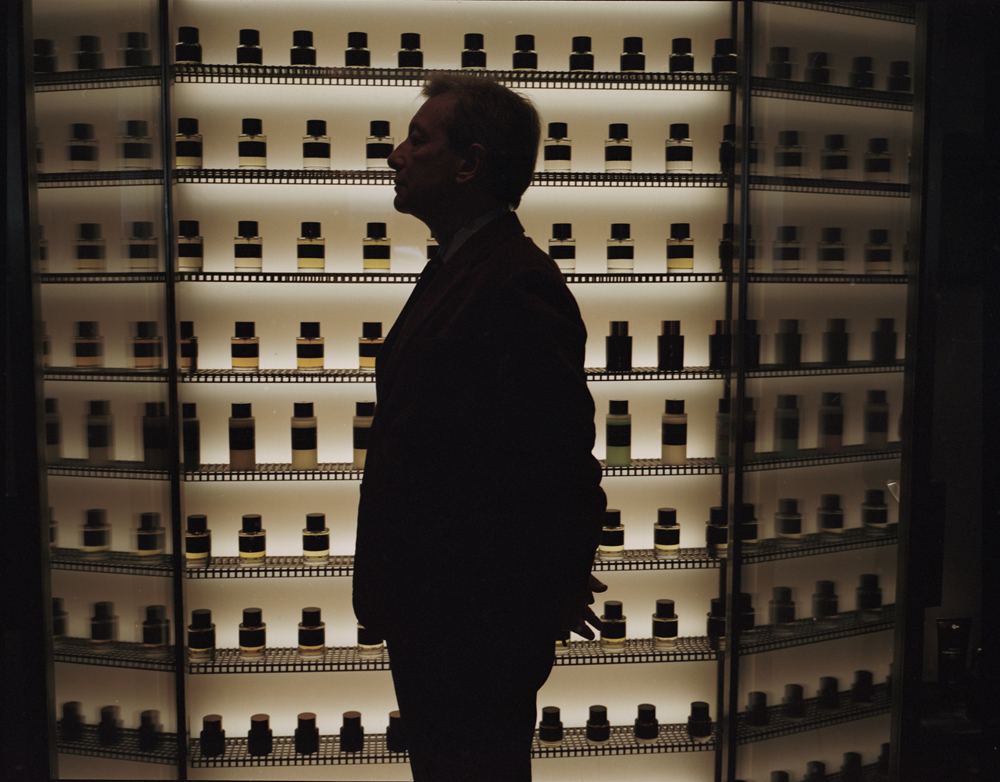Frederic Malle, perfumer
Фредерик Маль, парфюмер
Текст: Евгений Рабкин
ФОТО: алексей юренев
text: eugene rabkin
photo: alexei yurenev
6 марта в России начнет продаваться новый аромат Frederic Malle Music for a While — его можно будет купить в ЦУМе. Перед запуском The Blueprint побывал в нью-йоркском бутике парфюмера и расспросил Фредерика Маля про то, как создаются ароматы, с чего начинается работа над ними и почему этот процесс напоминает воспитание детей.
As Frederic Malle prepares to release a new perfume, “Music for a While,” The Blueprint met with the renown perfumer at his Madison Avenue boutique in New York.
Парфюмер Фредерик Маль не первый в семье, кто посвятил себя парфюмерному искусству: когда-то дед Маля запускал Parfums Christian Dior. До того как основать собственный бренд, у Маля складывалась завидная карьера в парфюмерной индустрии. Но к концу XX века парфюмерный мир захватили пресные массовые ароматы с лицами знаменитостей на флаконах. Двигателем индустрии стали не творческие люди, а менеджеры, часто выходцы из других сфер. В 2000-е Маль основал собственный бренд — он хотел вернуть власть «носам», талантливым людям, которые действительно умели создавать ароматы. Вместе с соратником и другом, французом Сержем Лютансом, Маль подтолкнул развитие высокой парфюмерии — бескомпромиссных ароматов, созданных из лучших ингредиентов, существующих на рынке. Бренд не просто имел ошеломительный успех — он также пробудил целую волну независимых парфюмерных брендов, а заодно и орду имитаторов. В 2014 году компанию Маля купил концерн Estée Lauder. В 2018 году Маль выпустил новый аромат — Music for a While. Незадолго до московского запуска Евгений Рабкин встретился с Малем в нью-йоркском бутике Editions de Parfums Frederic Malle.
Malle comes from a venerable tradition of perfume-making — his grandfather launched Parfums Christian Dior. And while Malle had an enviable career in the perfume making business before he started his own label, Editions de Parfums Frederic Malle. But by the end of the 20th century the perfume business has been taken over by bland, mass-appealing scents with celebrity faces on them. It was increasingly driven by managers who often came from other industries, and not the creatives. With his brand, which he launched in 2000, Malle decided to give the power back to “the noses,” those talented people who actually create the perfumes. Along with his fellow Frenchman Serge Lutens, Malle has given rise to “haute parfumerie” — uncompromising scents made with the best available ingredients. The brand has proved to be a runaway success, spurring others to create independent perfume brands, and spawning various imitators. In 2014, Malle’s company was acquired by Estée Lauder. As Frederic Malle prepares to release a new perfume, “Music for a While,” Eugene Rabkin sat down to speak with him about his work process.
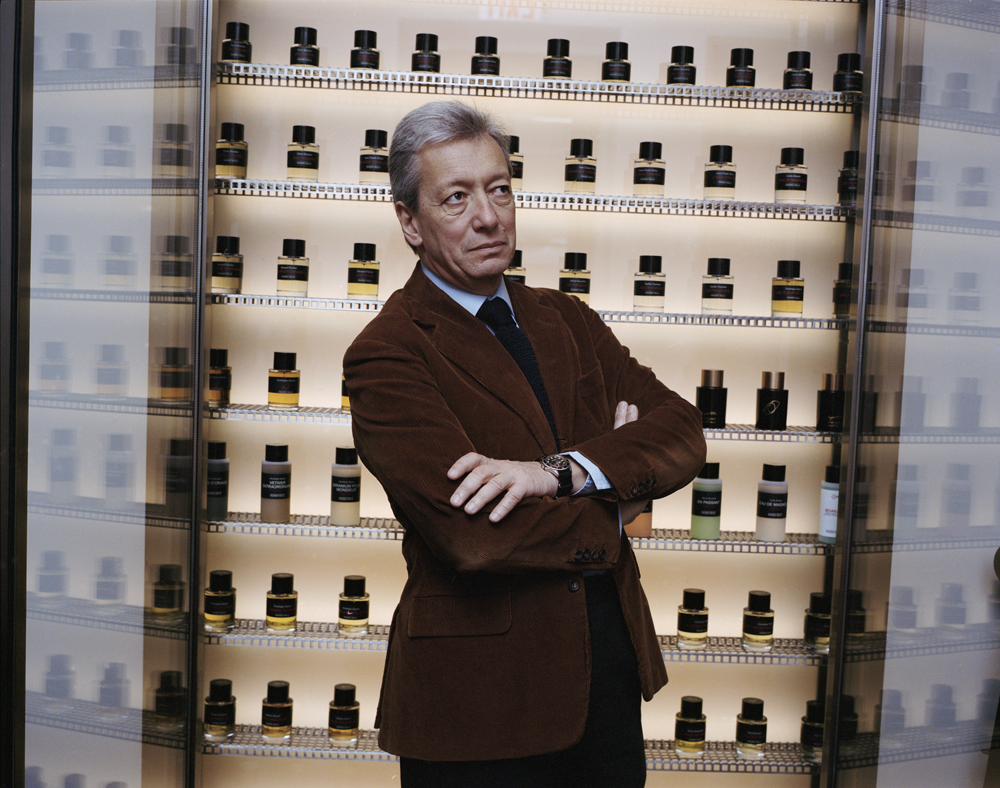
Издательство
Publishing
На создание ароматов меня нередко вдохновляют совершенно отвлеченные вещи. Я смотрю на искусство, слушаю много музыки. Не так много читаю, но у меня есть друг издатель, и, общаясь с ним, я понял, что хотел бы организовать свою компанию как издательский дом. Идея была в том, чтобы наделить властью и показать публике тех, кто на самом деле создает ароматы. Раньше они, как правило, оставались в тени, несмотря на то, что делали всю работу. «Носы» — это авторы. Я работаю с ними, я мог бы быть их редактором, а потом я выпускаю ароматы, то есть я еще и издатель.
I am often inspired to create perfume through other things. I look at a lot of art, listen to a lot of music. I don’t read so much, but I have a publisher friend, and through talking to him I realized that I would structure my company as a publishing house. The idea was to give the power, and public recognition to people who actually create the perfumes. Before they were always hidden, even though they did all the work. The noses are the authors. I work with them, I could be their editor, and then I produce the perfumes, so I am the publisher as well.
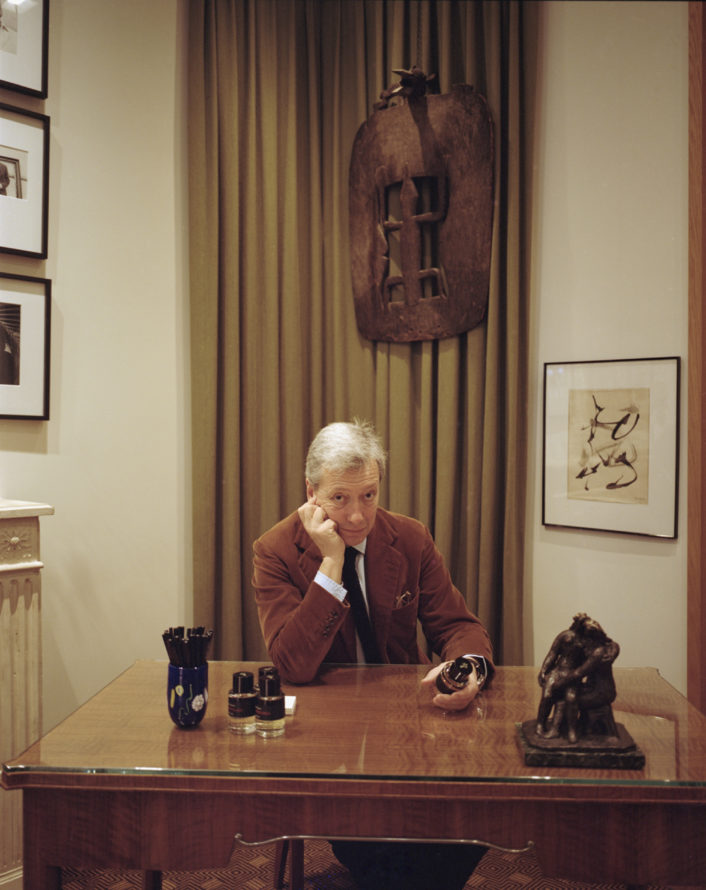
Лаванда
Lavender
Если посмотреть на лаванду своими глазами, очень близко, увидишь все особенности ее ноты. Нота эта очень сложная. Она сама как небольшой аромат: у нее есть свежая сторона, сладкая сторона, есть даже хвойная сторона. Получается такой осьминог с щупальцами. И каждое из щупалец можно вытянуть. Свежесть связать с цитрусом, потому что по факту в лаванде присутствует та же молекула, что в цитрусовых, так что она просто становится более свежей. К лавандовой сладости можно добавить ваниль. Еще одну часть можно связать с пачули. И вот у вас есть сердцевина лаванды, которая обычно ассоциируется с Провансом, но поскольку вы существенно усложнили ее, она становится таким таинственным, сексуальным ароматом. Ну потому что кто захочет переспать с тем, кто пахнет лавандой? Но вы захотите переспать с тем, кто носит Music for a While.
When you look at lavender with our eyes, meaning when you look at it close up, you see all the details of the note. A note like lavender is very complex. It’s like a little perfume; it has a fresh side, it has a sweet side, it has almost a coniferous side. So with all of these you have to see lavender like an octopus and its arms. So you can elongate each arm. The freshness can be linked with citrus, because it actually has the same molecule as the citrus world, and so it becomes a fresher lavender. But then there is the lavender’s sweetness, which can be added to by vanilla. And then there is another part that can be linked to patchouli. So now you have this heart of lavender, which usually is something that makes you think of Provance, but because you have now significantly complicated it, it becomes this mysterious and sexy scent. Because who wants to sleep with someone who smells like lavender? But you’ll want to sleep with someone who is wearing “Music for a While.”
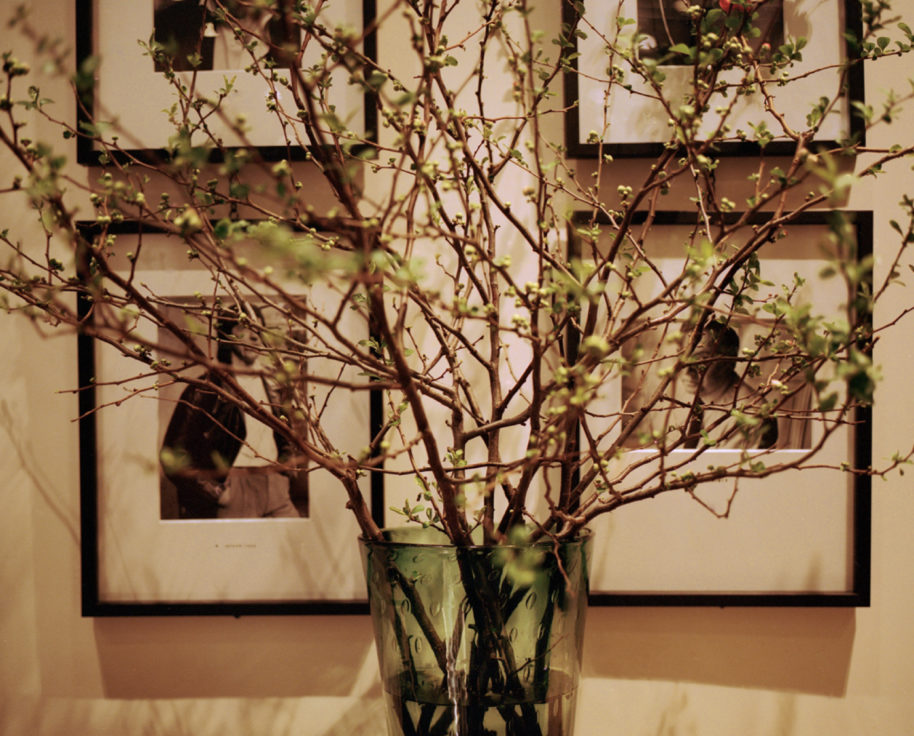
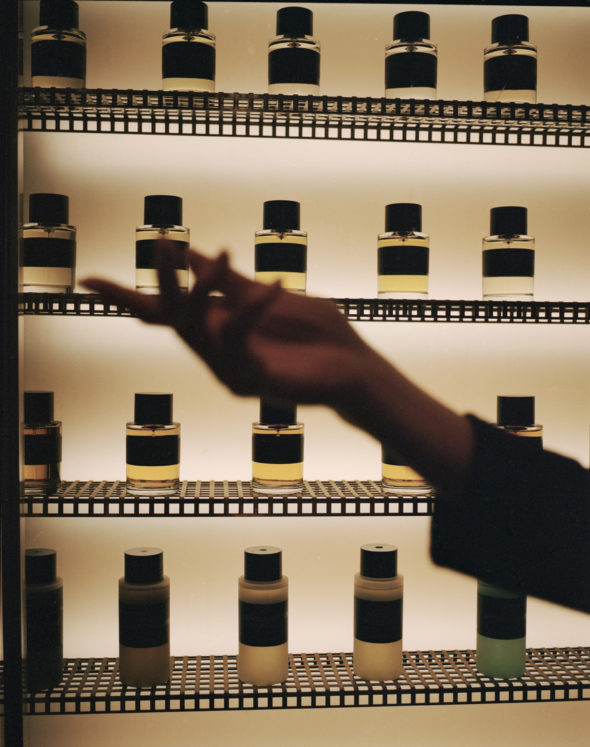
Аромат и цвет
Perfume and color
Что я в жизни умею делать — так это связывать ароматы с другими вещами. Визуальная часть очень проста. Я чувствую запах — я вижу цвета. Обычно, когда я работаю с парфюмером, всегда есть соблазн обсудить сырье, если вы, как и я, знаете таксономию. С другой стороны, это все равно что быть излишне властным редактором, который приказывает вам заменить это слово вот этим, и все становится слишком искусственным. Лучше сказать: «Возможно, этот персонаж должен быть более романтичным». Дать писателю сделать свою работу. Обычно я использую массу аналогий, так как хочу дать парфюмеру свободу. Говорю, например, что чувствую слишком много фиолетового. Когда я вдыхаю запах лаванды, я вижу этот странный фиолетовый цвет. Но когда мы добавляем лаванде тепла, она ощущается как нечто более желто-коричневое. А когда добавляем свежести, она становится более серой. Это какие-то очень непосредственные реакции, почти как рефлекс.
One of the things that I can do in life is linking perfume to other things. The visual part is very easy. Because, when I smell I often see colors. Generally, when I work with a perfumer, you always have the temptation of talking raw material, if like me, you know the taxonomy. On the other hand, it’s like being an overbearing editor, saying why don’t you replace that word with that word, which ends up becoming very reductive. It’s better to say, “Perhaps your character should be more romantic.” So you let the writer do his job. And so, you have to use a lot of analogies when you are in my seat, because you want to give freedom to the perfumer. But if you want the perfumer to make his formula, then you say “Oh, I smell too much purple.” When I smell lavender I smell this strange purple color. But when we make the lavender warmer, it feels a little bit more brown-yellow. When we make it fresher, it becomes grayer. It’s quite immediate, almost like a reflex.
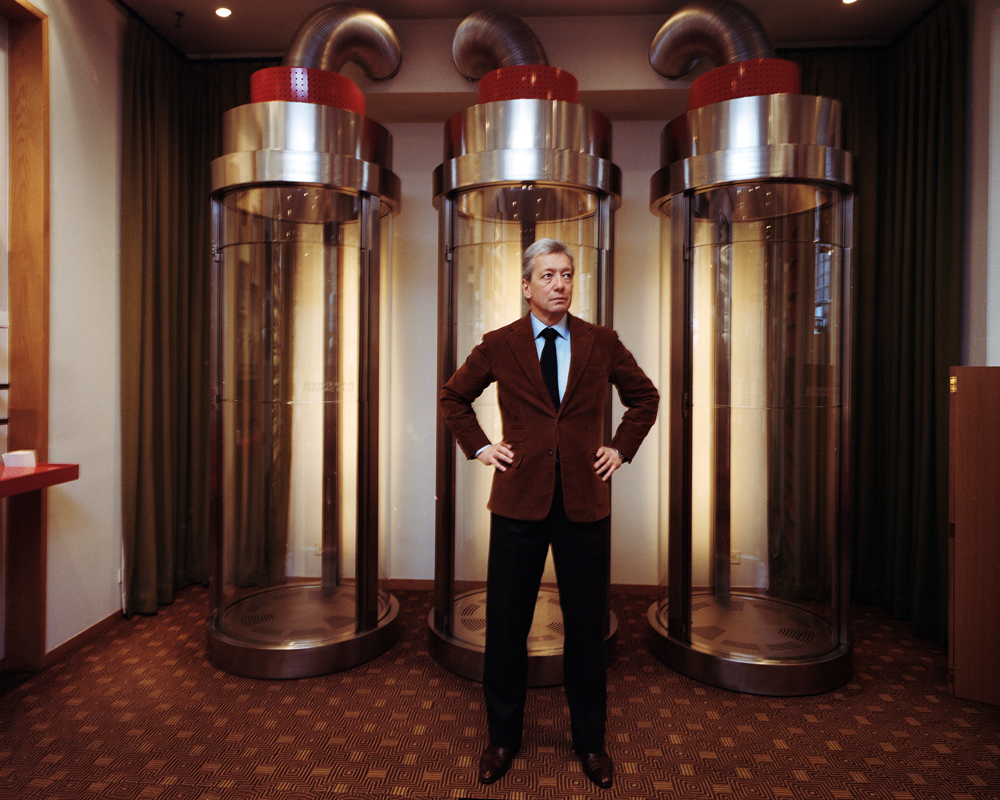
Люди, типажи и запах кожи
People, types and skin smell
Парфюм — это очень парадоксальная вещь, потому что публика понятия не имеет, из чего он сделан. Он им нравится или не нравится, но ощущают они его на инстинктивном уровне. И мне это очень нравится. Когда я работаю над ароматом, он говорит со мной и рассказывает мне какие-то вещи — обычно о сексе, соблазне или просто о себе. Например, он говорит: я чистый, я пахну шелком, и после этого я вижу людей, которые стали бы носить этот аромат. Это не маркетинговое упражнение, это висцеральная реакция. И потом я как бы рассказываю самому себе историю про этого воображаемого человека. Иногда на этом этапе, через несколько недель работы над ароматом, персонаж появляется у меня в голове. Очень часто это кто-то, кого я знаю, или персонаж из фильма. Я смотрел очень много фильмов, пока рос, так как моя семья была связана с киноиндустрией. Так что мне знакомы многие персонажи, и я верю в то, что в жизни часто появляются архетипы. Поэтому я часто думаю: ОК, это для женщины или для мужчины вот такого типа, в таком-то окружении. Обольщение — огромная часть контекста, и тут люди могут проявляться по-разному. Кто-то считает, что крайне привлекательно иметь очень белые зубы и быть отмытым до скрипа. Такие всегда выглядят так, будто только что из душа. Но есть и те, что хотят, чтобы их кожа была частью уравнения, чтобы проявлялось их животное начало. Это две крайности, между которыми существует еще множество типажей.
Perfume is something that is very paradoxical, because the public doesn’t know what’s in it, and they like it or they don’t like it, but they smell it instinctually. So people choose to love or hate a perfume out of pure gut feeling, which I love. When I work on a perfume, a perfume talks to me and tells me certain things, which are generally about sex, about seduction, and also simply about the way you want to be. It tells me, for example, I’m clean, I am smelling like silk, and then I start seeing the people that would wear it. It’s not a market exercise, but a visceral reaction. Then I sort of tell myself a story about this imaginary person. And to this point, very often, after a few weeks of working on a scent, a person, a character, arrives in my head. Very often someone I know or a character in a movie. I grew up seeing a lot of movies because my family was involved in cinema. So I know a lot of these characters and I also believe a lot in archetypes in life. So often I think, “Oh, this is for that type of woman or oh this is for that type of a man, in that type of surrounding.” Seduction is a big part of context, and here people can be very different. Some people think it’s very very attractive to have very white teeth and be all perfect and squeaky clean. They always look like they just stepped out of the shower. But then you have others, who on the contrary, want their skin to be part of the equation, as if they want the animal part in them to come out. These are two extremes, and then there are many types in between.
История Music for a While
A story of “Music for a While"
Когда я слушаю парфюм, я часто ассоциирую его с историей. Начало «Музыки» было чистым шиком — аристократический Париж 70-х, Лулу де ля Фалез в Yves Saint Laurent и тому подобное. Личность с характером, кто-то сексуальный. Есть также связь с парфюмом, который мы делали для дома, Café Society. Café Society очень напоминал тот тип парфюма, который мои родители и люди из парижского окружения 60-х и 70-х использовали для ароматизации помещений. Таких ароматов для дома больше не найти. И я подумал: а не сделать ли что-то подобное просто по памяти. Мы можем взять эту идею и разработать ее в полноценный парфюм. И пока мы работали над ним, он становился все сексуальнее, а тот Париж, что я видел в начале, исчез. Вместо этого я увидел образы из фильма, который в 1958 году снял мой дядя, Луи Маль, под названием «Любовники». Тогда это был скандальный фильм: там впервые показали людей, занимающихся любовью. Поверьте, по сегодняшним стандартам это просто «Дисней». Там была Жанна Моро, предававшаяся страсти, с жемчугами, с руками, очень эротично скользившими по простыне, и я подумал: «Ого, это правда ОЧЕНЬ сексуально». И вот я решил сделать что-то в этом роде.
Название парфюма пришло ко мне, когда я ехал в машине по Лос-Анджелесу и слушал французский подкаст про классическую музыку. Я услышал произведение Генри Перселла Music for a While. Несмотря на то, что оно было придумано в XVII веке, оно звучало очень современно, как Джон Кейдж. И я подумал: вот оно. Вы наносите этот аромат, и он как музыкальное произведение. Он начинается свежо, затем нарастает, и пока вы носите его, он возвышает вас, уносит куда-то... Это лицензированное обольщение. А когда он исчезает — все, его нет.
When I smell a perfume, I often associate it to a story. For “Music for a While,” the beginning for me was super chic, the aristocratic Paris of the ‘70s, Loulou de la Falaise wearing Yves Saint Laurent, that sort of thing. A person with a real character, someone who is quite sexual. It also came from a perfume that we made for the home, called Café Society. Café Society was very much reminiscent of the sort of perfume that my parents and people in the Parisian milieu of the 60s and 70s were using to perfume their houses. You can’t find this type of perfume anymore for home. And I thought, let’s make something like that just from memory. Now we could use that idea and turn it into a full-fledged perfume to wear. And as we worked on it, it became sexier and sexier, and gradually that Paris I envisioned in the beginning disappeared. What I saw instead were the images of a movie made by my uncle, Louis Malle, called Les Amants (The Lovers). It was a scandalous film when it came out in ’58, because it was the first time that people were filmed making love, and believe me, by today’s standards it looks like Disney. But you see Jeanne Moreau abandoning herself, with the pearls, with her hands sort of going down in a very sexy way on the sheet, and I thought, “Wow, this IS very sexy.” So I thought maybe I should do something like that.
The name for the perfume came to me as I was in my car in LA, listening to a French podcast about classical music, and I heard this piece by Henry Purcell, called “Music for a While,” and even though it was composed in the 17th century, it sounded very modern, like John Cage. And I thought, “Wow, this is exactly it.” You wear this perfume, and it’s like a piece of music. It begins fresh, then it builds up, and as you are wearing it, it elevates you and takes you elsewhere… It’s a license to seduction. And when it’s gone, it’s gone.
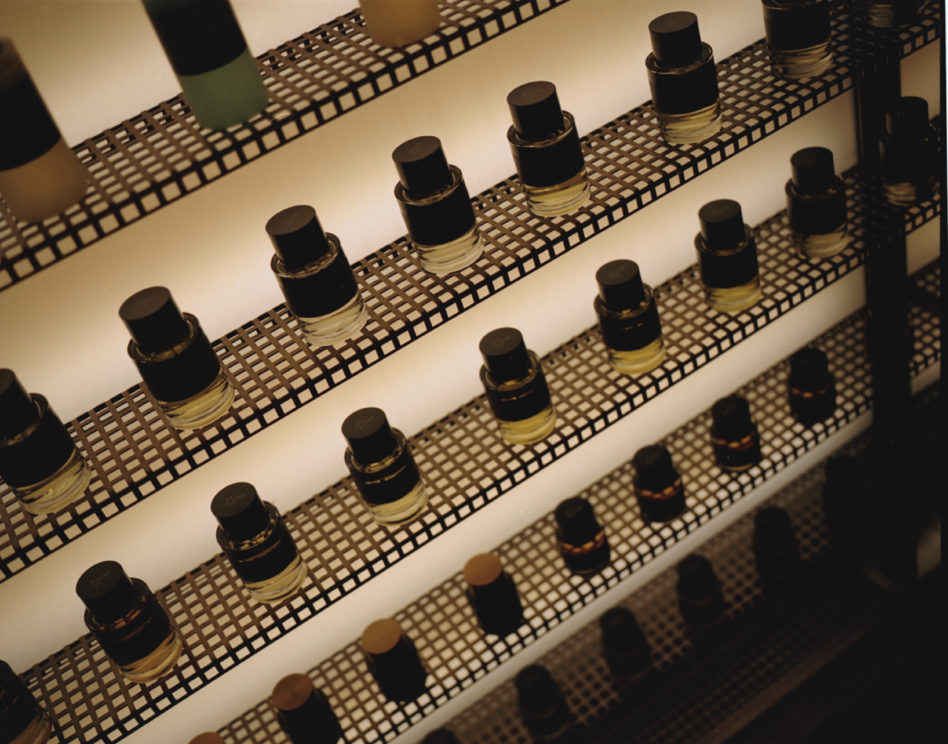
Как создается аромат
How we create a perfume
Мы движемся от ингредиентов или от идеи. Представьте себе Микеланджело и скульптуру. У вас есть огромная глыба мрамора, из которой вы создаете общую форму. До конца еще далеко, но у вас уже есть понимание того, что вы хотите. Так и у нас. Обычно у нас три или четыре крупных референса. Это может быть завершенный продукт — и им может стать природа, потому что у природы есть запахи. У цветов есть запах. Или это классический аромат. И потом мы говорим: «Так, если мы возьмем эту классику и отсечем от нее половину, соединим ее с другим цветом, может выйти очень круто». Мы работаем с ней как с коллажем. И после этого она может превратиться в нечто совершенно новое. Или есть интересный новый ингредиент, или старый ингредиент, который никогда не соединяли с другим. Мы стараемся выстроить что-то вокруг определенного аккорда, потому что никто раньше такого не делал.
Для начала мы составляем словесное описание, это немного похоже на чтение меню. Ты читаешь названия ингредиентов, понимаешь, что они означают, и можешь вообразить, что в конце концов окажется у тебя на тарелке. Потом появляется эскиз, с помощью которого парфюмер иллюстрирует общую идею, и она или плохая, или многообещающая. И потом долгое испытание — работать, придерживаясь эскиза, и совершенствовать его до готовой картины. Это длительный процесс, в котором может быть много итераций. Это как растить детей. У вас есть одаренные, прекрасные дети, которые так хорошо пахнут с самого рождения. И это для меня самое сложное — потому что есть масса моментов, когда их нужно останавливать. И вот у вас капризный, своевольный ребенок. Вы знаете, что у него есть потенциал, но по ходу дела он ведет себя отвратительно. И тут вам просто нужно верить. Ведь потом он станет прекрасным.
We either start from the ingredients, or you start from a finished idea. Think of Michelangelo, think of sculpture. You have a big block of marble, from which you create a general shape. It’s far from finished, but you already have the profile of what you want. That’s how we begin. We decide on generally there or four big inspirations. It could either be a finished product; a finished product can be nature, because nature offers perfumes. You know flower is a perfume. Or it can be a classic scent. And then you say, “Oh, if you take that classic and take half of it off, plug a different color to it, it might be really cool.” We work with it like a collage. And then it can become something completely different. Or there could be some interesting new raw material or an old raw material that has never been paired with another one. And we try to build something around that particular accord, because no one has done it before.
First we describe it with words, and it’s a bit of like reading from a menu. You read the ingredients, and you know what they mean, then you can imagine what’s going to end up on your plate. Then comes a sketch, where the perfumer gives you a general idea, and it’s either bad or promising. And then there is the long ordeal of staying true to that sketch, and then perfecting it into a picture. And this is a very long ride, where you can go through countless iterations. It’s exactly like raising children. You have gifted, pleasing children that smell good since they are born. And these are the most difficult for me, because there are many occasions where you need to know when to stop. And then you have your annoying, bratty child; you know that he or she has potential, but it behaves horribly along the way. There you have to really believe. But then when everything falls into place, it becomes beautiful.
